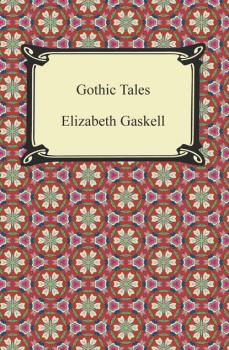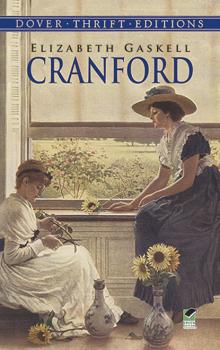ТОП просматриваемых книг сайта:















Элизабет Гаскелл
Список книг автора Элизабет ГаскеллАннотация
HarperCollins is proud to present its new range of best-loved, essential classics.‘But the cloud never comes in that quarter of the horizon from which we watch for it.’When Margaret Hale is uprooted from Hampshire and moves to the industrial town of Milton in the North of England, her whole world changes. As her sympathy for the town’s mill workers grows, her sense of social injustice piques and she passionately fights their corner. However, just as she disputes the mill owner, John Thornton’s treatment of his workers, she cannot deny her growing attraction to him. Highlighting the changing landscape of nineteenth-century Britain and championing the role of women in Victorian society, Gaskell brilliantly captures the lives of ordinary people through one of her strongest female characters in literature.
Аннотация
"North and South" is Elizabeth Gaskell's 1854 novel that contrasts the different ways of life in the two respective regions of England. In the North the emerging industrialized society is sharply contrasted with the aging gentry of the agrarian based South. The plot of «North and South» centers around the main character Margaret Hale, the daughter of a non-conformist minister who moves his family to an industrial town in the North after a split from the Church of England. With important underlying social themes, North and South stands out as one of the greatest novels in the history of English literature.
Аннотация
In «Gothic Tales,» Elizabeth Gaskell (1810-1865), the eminent Victorian author, brings us nine chilling gothic stories. Collected here are tales that set a precedent for ghost and horror stories of the era. In «The Poor Clare» a young innocent girl named Lucy is haunted by an unrelenting ghost invoked by her aging grandmother. In the novella «Lois the Witch» the young Lois sails to America to join her distant family. She is greeted by a New England engulfed in the fever of the Salem witch trials. Soon all goes wrong when she is deemed one of the cursed. The reader confronts the peaks of suspense in «The Grey Woman» – a terrifying psychological thriller. These among others shape this well rounded collection of one of the most respected Victorian authors. Gaskell was championed and published by Charles Dickens in his literary magazine «Household Words.» Her style, vision, and delivery are seen at its best here in «Gothic Tales.»
Аннотация
Elizabeth Gaskell's «Wives and Daughters» was originally published serially in «Cornhill Magazine» between August 1864 and January 1866. The work, which was left unfinished at the time of Gaskell's death in 1865, was completed by Frederick Greenwood. The novel is chiefly concerned with Molly Gibson, the only daughter of a widowed Doctor, who upon visiting the Hamleys of Hamley Hall finds a substitute for her mother in Mrs. Hamley. «Wives and Daughters» is a classic 19th century romantic novel that addresses the constraints imposed by society between individuals of professional versus aristocratic social classes. We see this in Molly's relationships with the Hamley family and, when her father remarries, with her relationship with her stepsister, Cynthia, who is more worldly and sophisticated.
Аннотация
First published in 1848, “Mary Barton” is a moving account of poverty and the working class by English author Elizabeth Gaskell. Set in the early 1840s in the English city of Manchester, Gaskell’s first novel follows the young and beautiful Mary Barton, daughter of a factory worker, who is eventually caught up in the class struggle of her time. She attracts the attention of a wealthy mill-owner’s son, Henry Carson, although she soon discovers her love for the poor, hard-working Jem Wilson. When a brutal shooting leaves a man dead, Mary must decide if she wishes to help in Jem’s defense, as he is accused of the murder, and she is certain she knows the identity of the true culprit. Gaskell weaves Mary’s story of romance and hope amidst a moving account of the grinding poverty of England’s working class, who often risked much with little regard or appreciation from the wealthy. Gaskell makes a compelling case for increased communication between workers and employers, greater equality between the rich and the poor, and the importance of the possibility of redemption and forgiveness. “Mary Barton” makes it clear why Gaskell is often called Great Britain’s social conscience of the Industrial Revolution. This edition includes a biographical afterword.
Аннотация
First published in eight installments from 1851 to 1853, Elizabeth Gaskell’s “Cranford”, one of her most popular works, is a gentle and humorous picture of an English country village. Based on the village of Gaskell’s childhood, the novel is narrated by a young woman visiting the town who describes the genteel poverty of the town’s female inhabitants and centers on the lives of two middle-aged spinster sisters, Miss Matty and Miss Deborah. The ladies work hard to conserve their appearances, habits, and social standards of propriety even in their reduced circumstances. Told in a series of graceful and loosely related sketches, the residents of Cranford are challenged when the poor and socially awkward Captain Brown moves to town with his two daughters. He rejects their rules of politeness and openly discusses his poverty and difficulties. Many of the novel’s tales concern the love lives, tragedies, and family dramas of the small town’s colorful characters. In a changing and modernizing world, the endearing stories and sympathetic struggles of the villagers of Cranford are captured in this compassionate and hopeful portrayal of small-town English life. This edition includes a biographical afterword.
Аннотация
Widely believed to be her masterpiece, Elizabeth Gaskell’s “Wives and Daughters” was originally published serially in “Cornhill Magazine” between August 1864 and January 1866. The work, which was nearly finished at the time of Gaskell’s death in 1865, was completed by Frederick Greenwood. The novel’s heroine is Molly Gibson, the only daughter of a widowed country doctor in a small town in England. Molly, lonely and motherless, is befriended by the Hamley family, who are landed gentry and therefore above Molly’s station, as the daughter of a professional. After returning home to her father, Molly finds that he has remarried. While her new stepmother is petty and greedy, in sharp contrast to Molly’s warmth, kindness and innocence, Molly finds a friend and confidant in her new stepsister Cynthia. “Wives and Daughters”, a classic 19th century romantic novel that follows the daily lives and romantic entanglements of Molly, Cynthia, and their family and friends; is an insightful examination of the constraints imposed by society between individuals of professional versus aristocratic social classes. In turns both heartbreaking and comic, Gaskell’s novel will linger with readers long past the final page. This edition includes an introduction by Adolphus W. Ward and a biographical afterword.
Аннотация
Set in the fictional industrial town of Milton in the North of England, “North and South” is Elizabeth Gaskell’s 1855 novel that contrasts the different ways of life in the two respective regions of England. In the North the emerging industrialized society is sharply contrasted with the aging gentry of the agrarian based South. The plot of “North and South” centers around the main character Margaret Hale, the daughter of a non-conformist minister who moves his family to an industrial town in the North after a split from the Church of England. Here the impact of the industrial revolution can be fully seen as tensions between workers and employers over poor working conditions and the growing divide between the rich industrialists and poor factory workers escalate into violent conflict. Originally serialized between September 1854 and January 1855 in Charles Dickens’s “Household Words”, “North and South” was one of the first and most important social novels to address the changes brought about by the industrial revolution in England. This edition includes an introduction by Adolphus William Ward and a biographical afterword.
Аннотация
A sensitive and moving portrait of a Victorian town, captured at a transitional period in English society, Cranford first appeared serially in Charles Dickens's magazine Household Words from 1851 to 1853, and in book form in 1853. Author Elizabeth Gaskell situated her stories in a hamlet very like the one in which she grew up, and her affectionate but unsentimental portraits of the residents of Cranford offer a realistic view of life and manners in an English country village during the 1830s.Cranford recounts the events and activities in the loves of a group of spinsters and widows who struggle in genteel poverty to maintain their standards of propriety, decency, and kindness. Tales of the heroism and self-sacrifice of Captain Brown, the surprisingly betrothal of Lady Glenmire, and the future for pretty but poor Miss Jessie support a web of subtle but serious themes that include the movement from aristocratic to middle-class values, the separate spheres and diverse experiences of men and women, and the curious coexistence of customs old and new in a changing society.Often referred to as Mrs. Gaskell, the author preferred Cranford to all her other works, which include a popular biography of her friend Charlotte Brontë. Praised by Charles Dickens as «delightful, and touched with the most tender and delicate manner,» the novel remains a favorite with students and aficionados of nineteenth-century literature.
Информация о книге
Автор произведения Элизабет Гаскелл
Жанр Зарубежная классика
Серия Dover Thrift Editions
Аннотация
A moving account of poverty set in 1840s Manchester, Gaskell's first novel follows the young and beautiful Mary Barton, daughter of a factory worker, who is eventually caught up in the class struggle of her time. She attracts the attention of a wealthy mill-owner's son, Henry Carson, although she soon discovers her love for the poor, hard-working Jem Wilson. When a brutal shooting leaves a man dead, Mary must decide if she wishes to help in Jem's defense, for he is accused of the murder, and she knows who the real culprit is with certainty. Gaskell weaves Mary's story amidst a moving account of the hardships and grinding poverty of England's working class. A clear call for increased communication, greater equality between the rich and the poor, and redemption is made by Gaskell, who is often called Great Britain's social conscience of the Industrial Revolution.










